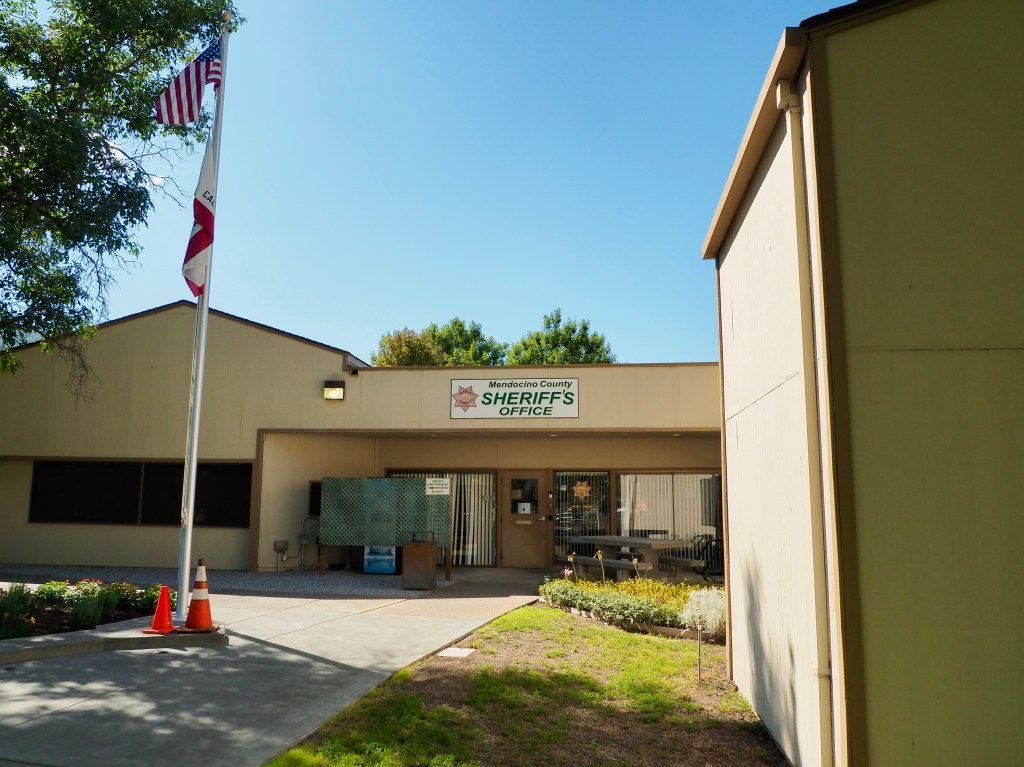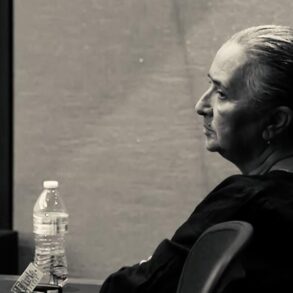
Matt Kendall, Sheriff/Coroner of Mendocino County since the first day of 2020, has a sister, a surgery nurse who used to work at Howard Memorial Hospital who warned him about 20 years ago that a lot of medicine was moving away from curing the problem and towards pain maintenance, a situation that would lead to problems with addiction.
“There are a lot of spokes in this wheel that have come together to make this a perfect storm,” he says.
The county jail’s medically assisted treatment provides doctor-prescribed Buprenorphine and substance abuse counseling with Buffy Bourassa serving as the restorative justice coordinator.
“We do as much education and counseling as possible with folks who are in custody and assign probations officers to keep them on the path after they leave. A lot of that has to do with changing old behavior; when people leave the jail, they have to be ready to stop being involved with people, places and things that got them there in the first place.”
Law enforcement and the courts used to be the pathway to treatment. However, with the realignment of the criminal justice system over the years, all of that has been removed; possession of fentanyl, heroin, cocaine, methamphetamine is now a citation—and very few people show up for those citations.
“There are so many people who will never be brought to jail. They will get their citation but will not get any time.”
He has high praise for the Mendocino County Drug Court that was run so effectively in the past.
“I’ve never seen so many successes coming out of one program; everyone knew if you wanted to get clean, you went to drug court. The current sentencing guidelines, however, don’t lend to people wanting to do the work. It’s easier to just do their time and get out.”
The realignment of the California criminal justice system began with Assembly Bill 109 establishing the California Public Safety Realignment Act of 2011 which allows for current non-violent, non-serious, and non-high risk sex offenders, after they are released from California State prison, to be supervised at the local county level.
In 2014 Proposition 47 reduced most drug possession offenses and thefts of property valued under $950 from felonies to misdemeanors.
In 2016 Prop. 64 legalized specified personal use and cultivation of marijuana for adults 21 years of age or older and reduced criminal penalties for specified marijuana-related offenses for adults and juveniles.
In 2016, Proposition 57 gave state officials new policy options for reducing incarceration.
“These rounds of realignment legislation removed the teeth from law enforcement and being able to get people into treatment. We cannot arrest people for simple possession; we’re mandated to give them a citation—for heroin, fentanyl, methamphetamine, cocaine—and they go to court and pay a fine.
“Our major crimes team works with drug dealers and narcotics—undercover work throughout the county. We arrange for them to sell us drugs and we arrest them for possession to sell. But it’s a non- violent crime. They get released, see the judge and may get some time with us in the county jail but it’s very rare that any of them will ever be sentenced to a state prison.”
Kendall comes in on a Saturday or Sunday to get ahead for the coming week and goes through the bookings. He knows a lot of these folks; he has been dealing with them for years. Sixty percent of what came through the doors on one weekend, of the laws that were broken, were directly related to addiction.
“They are misdemeanors, only remedied by a citation. People have stopped reporting crimes; thefts are not being reported because nothing is going to happen if they do report them; and people know that.”
“What’s scary for me is when the teeth get completely removed from the laws, the citizens are going to grow their own and you’re not going to like what you see when that happens. You’re going to have laws being enforced by people who don’t know how to do that—a recipe for disaster.”
Last year the county had 69 coroner cases that were accidental deaths—vehicle accidents fire, drownings. Of those, 48 were overdoses, just about 70 percent.
“We know that addiction is driving most of these crimes; why aren’t we dealing with the addiction?”
He believes the legislation was put in place by well-intentioned people who believe law enforcement should not be tasked with dealing with narcotics issues. Declaring this a public health emergency, which he says it most definitely is, they determined they were issues for social services.
“There was no framework set up for social services to become a conduit into treatment and it would require a really robust social services network…that we don’t have.
“We’re still constantly being called even though we’ve been legislated out. So how do we get ahead of that? Right now, all we can do is give you a citation and tell you to go on your way.”
This is a heroin crisis.
“A lot of these guys we know became homeless after they became drug addicted. They couch surfed, victimized their benefactors and were thrown out. I know many of them and I know their stories.
“I’m not sure where we go from here.”
The two things he sees tied to every homeless encampment are syringes and methamphetamine smoking pipes. After cleaning up the encampment last year behind Daniel Steel & Machine by the railroad tracks, they picked up over 7,000 syringes—for an encampment of about 18 people.
“We have a needle exchange program in the county; were those people exchanging needles or just having them handed out? If there was a one-on-one exchange, the most each person would have had would have been one syringe.”
Users who are not getting clean create more need for narcotics creating more drug dealers.
“How do we stop people from shopping with these cartels and these drug runners?
You get rid of the user.”
In his 30s he remembers that a DUI came with consequences—loss of driving license, a couple of days in jail; a mandatory $1,500 fine.
“It was enforcement and education that got us through that but we don’t have that anymore.
“All these legislative changes were cloaked in the idea of decency, that we have to treat people differently than we’ve done in the past. But when people are dying on the street of overdoses, laying in a ditch, I’m not sure how humane that is; that’s slow homicide for these people.
“When we give them meth pipes and needles because it’s a cleaner way to use, those are Band Aids that will keep them from getting hepatitis, lower the numbers for AIDs—harm reduction methods that stop us from going to the root of the problem.
“We need laws that require people go to treatment or be sequestered as they have been in the past. However, we don’t have the resources for either.
“If you had to choose between visiting your kid in the county jail or in that marble orchard we call the cemetery, I’d pick jail.”
“With these laws, there are people we save 2-3 times in a row; where is rock bottom.”
“We see fentanyl, heroin, methamphetamine on a daily basis. Everybody who lives in Ukiah sees them on a daily basis whether they recognize it or not.”
He does not agree with the trend of changing the nomenclatures—from pot growers to farmers; from drug addiction to substance use disorder.
“Personal responsibility is being removed from people on a daily basis. If people aren’t responsible for themselves and their actions, who becomes responsible? I don’t know how we get ahead of these things; but right now, where we are, I’m not seeing it.
“Every single time we wind up dealing with someone who has committed a heinous crime, messed up on drugs, people say it’s got to be mental health. Which came first, the chicken or the egg?
“Some say they were medicating themselves because of mental health issues; others that they have mental health issues because they were using drugs. However, we have a lot of people who have serious mental health issues who would not have had them had they not used drugs. I don’t know which is the truth; it probably lies somewhere in the middle.
“We’ve stepped so far away from making hard decisions. Someone has stand up and say enough is enough.”
This post was originally published on this site be sure to check out more of their content.






